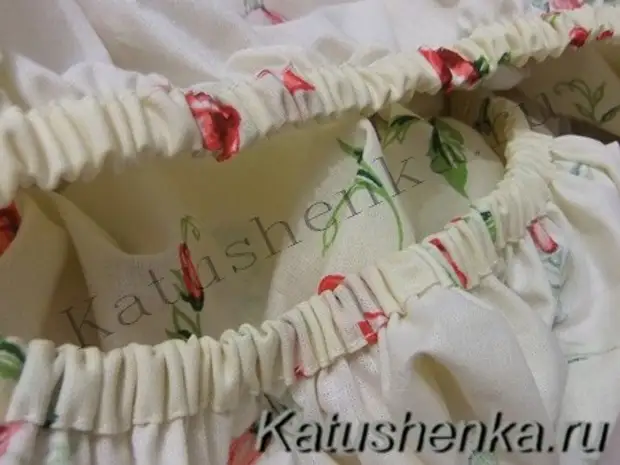
"How to sew a tensioned sheet on the rubber band" - this is exactly the question I wondered when I realized that the usual sheet rolling and slides.
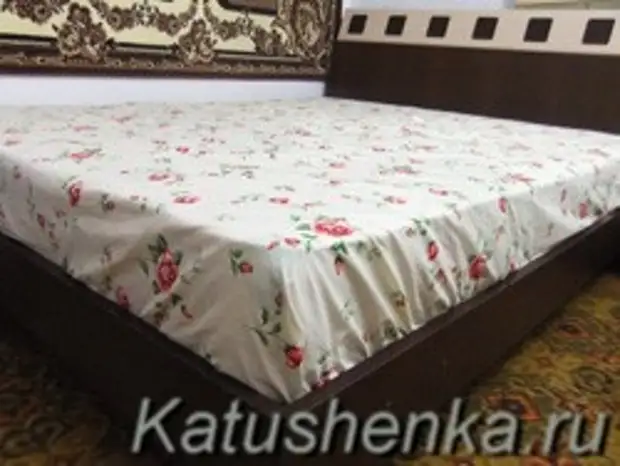
And so I decided to try to sew such a sheet.
I do not know how practical there will be such a sheet on the folding sofa, but on the bed - the most!
It all started with the fact that I bought fabric.
On a mattress, a width of 160 cm We assume a tissue width 220, but on the mattress 180 width, you will have to put the cloth in width.
I needed a sheet to sew 160 cm wide on the mattress.
For this, I bought a fabric whose width is 220 cm.
If from 220 fade up 160 (width of the mattress), then it will be 60 cm. From this figure, I rejuvenate another twice altitude of the mattress (40 cm), then we will remain 20 cm (10 cm on the bending on each side). This, of course, is not thick, but either 10 cm, or have to be adopted.
I counted the length of the fabric from the considerations so that the corners in length and width were on the same level, i.e. Mattress length (200 cm) + twice the height of the mattress (40 cm) + 20 cm (on the bending on both sides) + two centimeters on each side on the bending.
Total it turns out 264 cm. But buying fabrics is better a little more. How much more?
The fact is that the hazard (and on the sheet it is best to buy a hawk) gives a shrinkage. Buck it (however, like any natural fabric, which gives shrinkage), it is necessary to calculate + 10 cm for each meter of tissue.
If the fabric needs 264 cm, then let not buy more for 25 cm, but at least at 15 - 20.
With the flow of fabric, it seems to have figured out. Now we will deal with how to sew tensioned sheets on the rubber band.
1. Cutting. We fold the fabric into four layers in order to be more convenient to paint. Width and length are known. We still need to cut corners. For this, the width of the tissue is retreating half the width of the mattress + 2 - 3 cm (stock on the fabric shrinkage with further wash) + 1 cm (on the seam allowances).
By the length of the fabric, we do all the same.
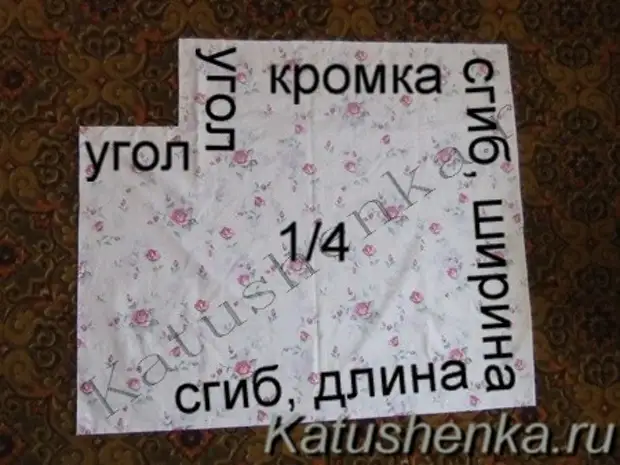
2. Next, we need to handle the angles.
I do not know if I can understand clearly, but I made a lot of photos with explanations, because It is better to see it.
So, we have carved corners. We take one corner and fold the inside side inside. On the other side where the edge (the length of the sheet) is left there and leave it, and where the cut (width of the sheet), bend the allowance of 1 cm (if left more, then lay down more, the main thing is that the elastic band can be crashing).
And lay the line on the typewriter.
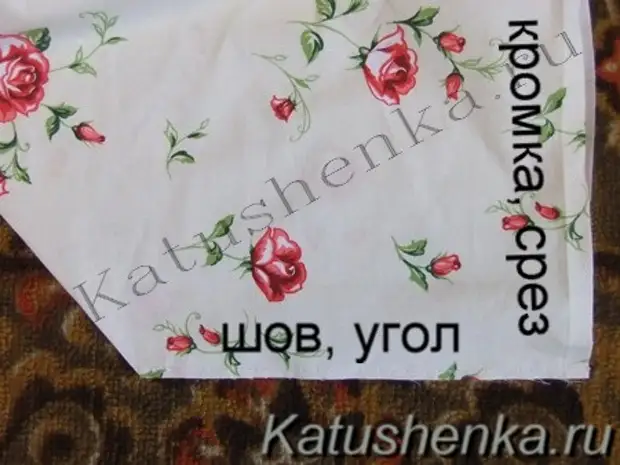
This is a general view:
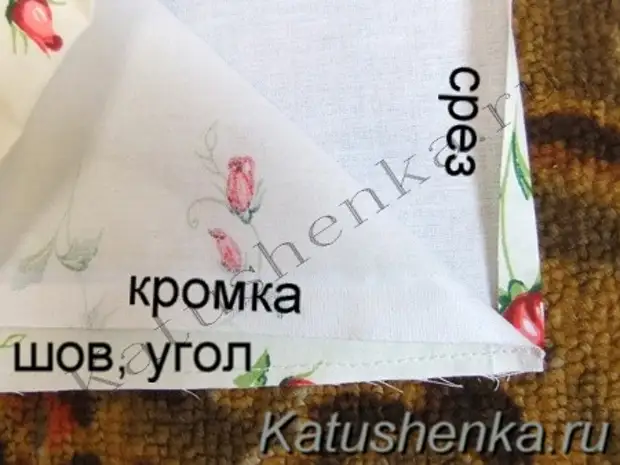
And here it is visible more larger, closer and Read more
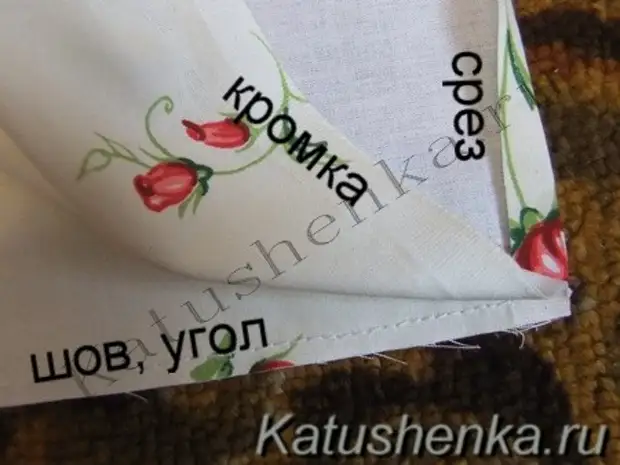
3. Now we need to turn out our shope, and sniff out on the involving side.
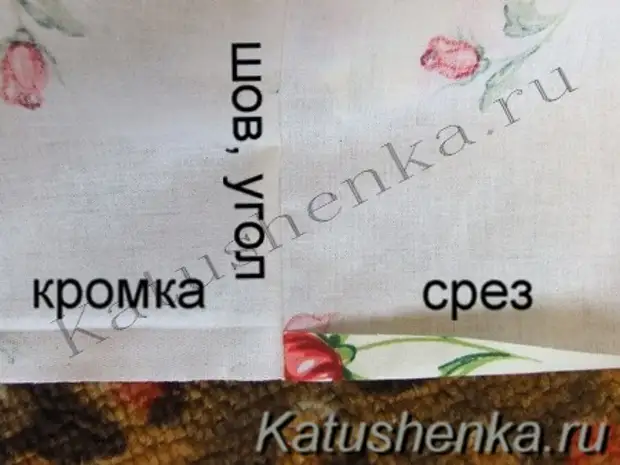
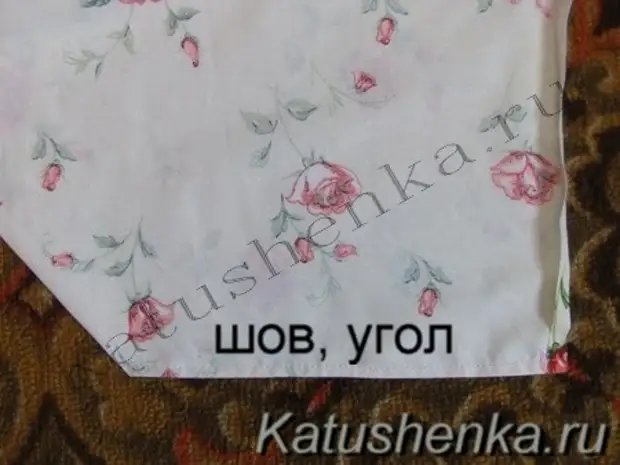
And here more larger:
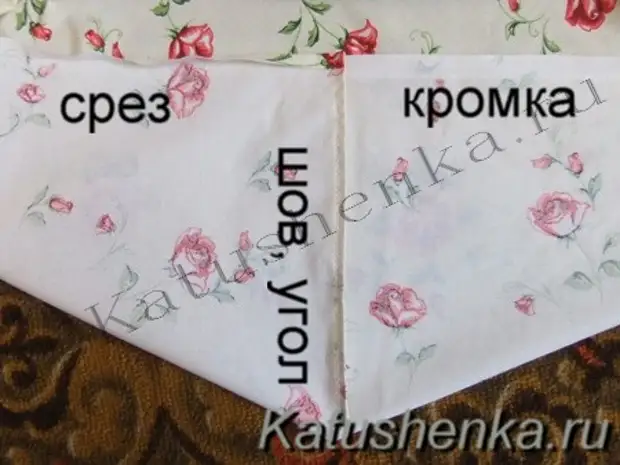
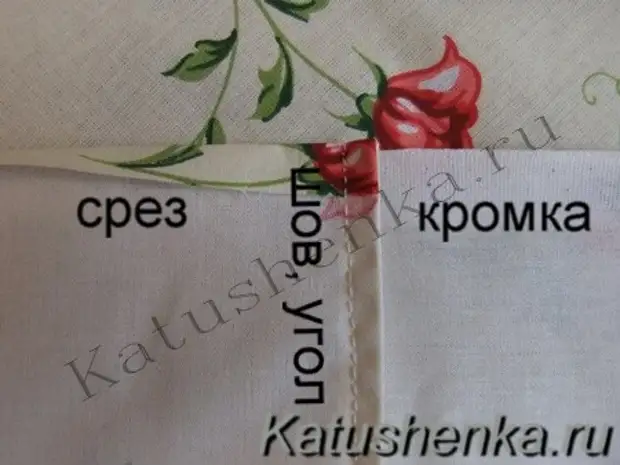
4. Now we need to consolidate the allowance so that you can insert a gum there.
To do this, we convey the allowance (adjusted slice and edge), and tap.
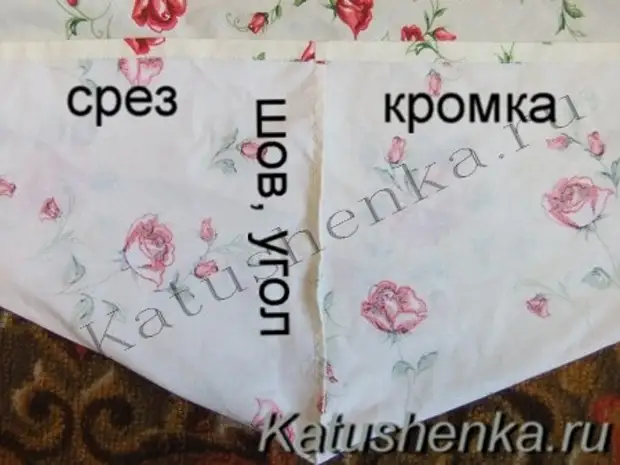
Biggle to be clearer:
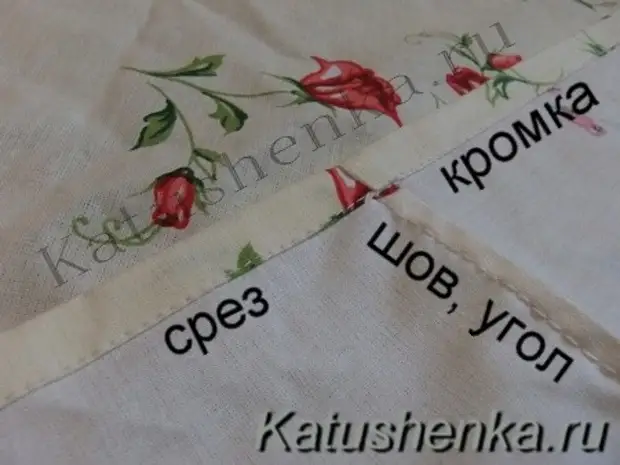
Thus, process all four corners.
5. Finally, it remains only to insert a gum. Insert. When I inserted the gum, then it was specially measured its length - it turned out 2.2 m. But this is an approximate number (so that it was from what to repel), because Gums are varying degrees of extensibility.
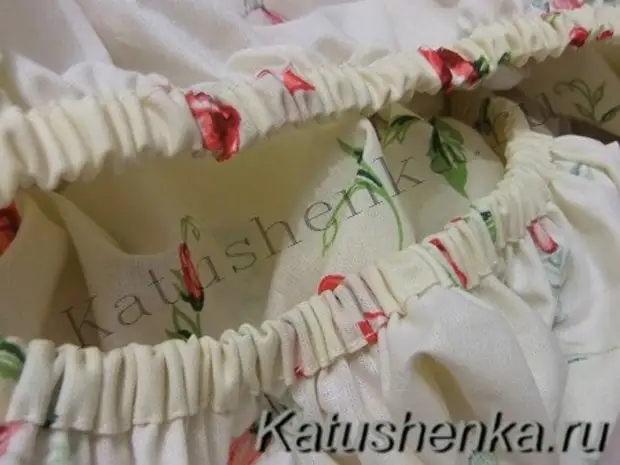
This is such a stretch sheet. It is so easy to sew a tensioned sheet on a rubber band.
And the most important thing is that nothing is doing free, and you do not need to constantly refill under the mattress.
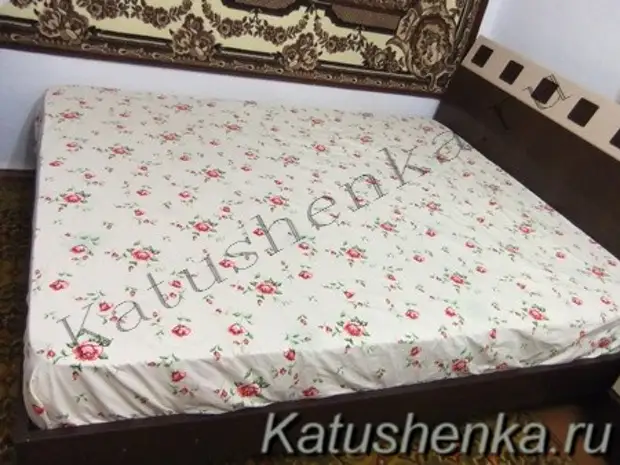
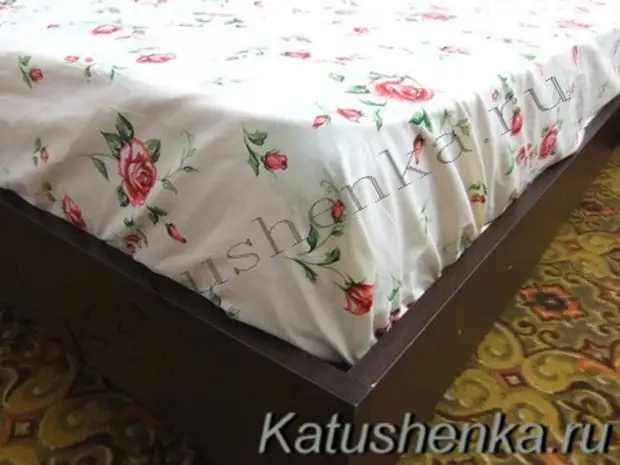
A source
And one more master class:
Constructively represent the parallelepiped on the overall sizes of the mattress, assembled in the corners or completely around the perimeter per gum (elastic braid).
For the manufacture of sheets, any dense natural fabrics used in the sewing of bed sets (cotton, flax, bamboo, tensel, blended) are suitable. For a more dense fit of the sheets of the mattress, you can use knitwear of a weak degree of extensibility, terry fabrics, flannel or twill. All of the above materials can be purchased in specialized fabric stores (home textile department). Weaving industry produces in the range of special width fabrics from 2.30 m to 3 m. If there is no possibility to purchase the material of the desired width, you can buy fabrics of 1.5 m and stack them along the lingerie seam.
For the manufacture of the tension sheet, it is necessary to measure the mattress (width, length, height). Attention! Measurements should be made according to the middle lines of the mattress, since many of them have roundings in the corners that reduce real dimensions.
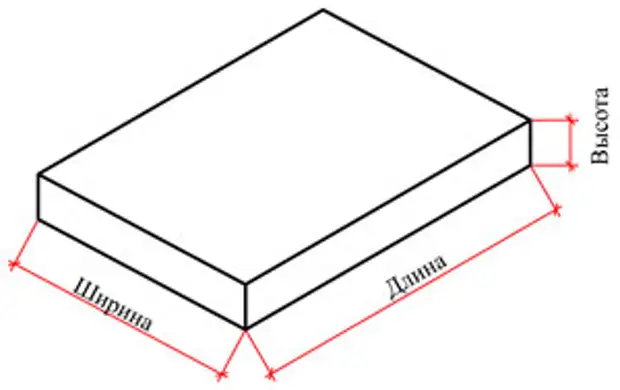
So, as an example, take a mattress of 160 × 200 × 25 cm.
Building pattern
On a sheet of paper, we build a simple design of the future sheets on the scale. Blacks are diagnosed with a mattress rectangle, taking into account points on the seams. In our case, this is a rectangle of 162 × 202 cm.
Next from the vertices of the obtained rectangle, we postpone the length of the mattress + 10 cm on all sides. Note: 10 cm is the allowance of the bottom of the mattress, as well as the lining of the rubber band. That is, for our drawing 25cm + 10 cm = 35 cm.
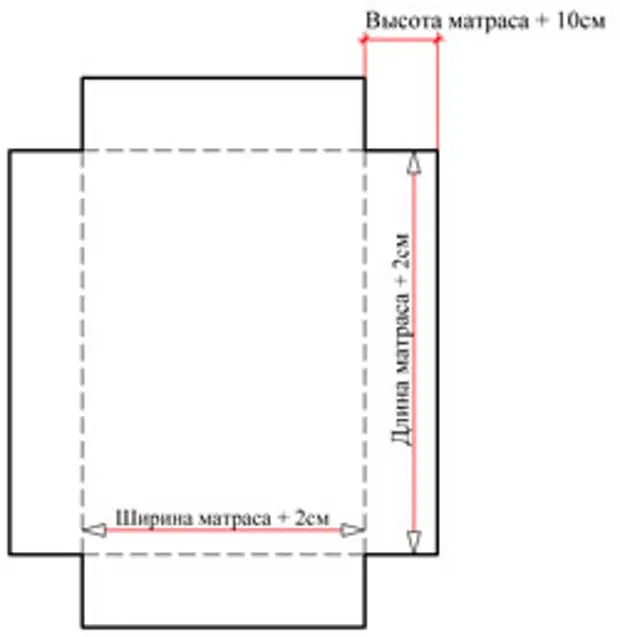
Now we consider tissue consumption: it will take a piece of 162 + 35 + 35 = 230 cm wide, 202 + 35 + 35 = 272 cm long. Cm. It should be remembered that natural tissues give a shrinkage when washing an average of 5% by duck and 2% based on. Before sewing the fabric must decide (wet in warm water, dry and exhaust).
When buying a fabric - add percent for shrinkage !! For example, a piece of fabric with a width of 240-250 cm and 280 cm long is suitable for the sheets on the mattress 160 × 200 × 25.
Technology tailoring
- Fabric dechating
- Carry out the drawings
- Firm the seams of the angles with double seam (folded the cuts with an invalid to the wrong one, stitching a width of 5 mm wide with the lines at the ends, twist to the wrong one, folding the "face to face", to straighten the allowance, strain the seam of 7 mm wide with lines at the ends so that the cuts The first line remained inside). Must get "boxes without a lid."
- Mean, putting the workpiece on the mattress
- Sluff the scene along the perimeter of the sheet, leaving a hole to produce gum. Note: There are several ways to design the edge of the tension sheet - you can put an elastic band only at the corners at a distance of 25 cm from the seam of the angle, but this method will suit quite experienced seams. A rubber band around the perimeter is the most easy-to-use node. Before washing to facilitate the process of iron, the rubber band can be removed and then inserted again.
- Grind a rubber in a row (the length of the gum is half the perimeter of the sheet) and fasten the ends of the gum.
- Restore the finished product.
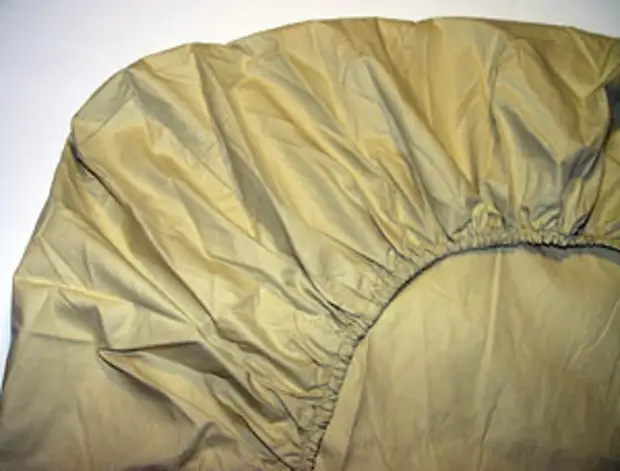
As additional devices for fixing the tension sheets on mattresses, you can use "suspenders", resembling garter bubbish designs for a stocking belt or special plastic clips, dressed on a cant mattress when climming the edges of the sheet.
A source
